
Xerxes I, commonly known as Xerxes the Great, was a Persian ruler who served as the fourth King of Kings of the Achaemenid Empire, reigning from 486 BC until his assassination in 465 BC. He was the son of Darius the Great and Atossa, a daughter of Cyrus the Great. In Western history, Xerxes is best known for his invasion of Greece in 480 BC, which ended in Persian defeat. Xerxes was designated successor by Darius over his elder brother Artobazan and inherited a large, multi-ethnic empire upon his father's death. He consolidated his power by crushing revolts in Egypt and Babylon, and renewed his father's campaign to subjugate Greece and punish Athens and its allies for their interference in the Ionian Revolt. In 480 BC, Xerxes personally led a large army and crossed the Hellespont into Europe. He achieved victories at Thermopylae and Artemisium before capturing and razing Athens. His forces gained control of mainland Greece north of the Isthmus of Corinth until their defeat at the Battle of Salamis. Fearing that the Greeks might trap him in Europe, Xerxes retreated with the greater part of his army back to Asia, leaving behind Mardonius to continue his campaign. Mardonius was defeated at Plataea the following year, effectively ending the Persian invasion.
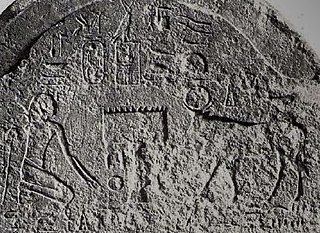
Cambyses II was the second King of Kings of the Achaemenid Empire from 530 to 522 BC. He was the son and successor of Cyrus the Great and his mother was Cassandane.

Darius I, commonly known as Darius the Great, was a Persian ruler who served as the third King of Kings of the Achaemenid Empire, reigning from 522 BCE until his death in 486 BCE. He ruled the empire at its territorial peak, when it included much of Western Asia, parts of the Balkans and the Caucasus, most of the Black Sea's coastal regions, Central Asia, the Indus Valley in the far east, and portions of North Africa and Northeast Africa including Egypt (Mudrâya), eastern Libya, and coastal Sudan.

Artaphernes, flourished circa 513–492 BC, was a brother of the Achaemenid king of Persia, Darius I, satrap of Lydia from the capital of Sardis, and a Persian general. In his position he had numerous contacts with the Greeks, and played an important role in suppressing the Ionian Revolt.

Histiaeus, the son of Lysagoras, was a Greek ruler of Miletus in the late 6th century BC. Histiaeus was tyrant of Miletus under Darius I, king of Persia, who had subjugated Miletus and the other Ionian states in Asia Minor, and who generally appointed Greeks as tyrants to rule the Greek cities of Ionia in his territory.
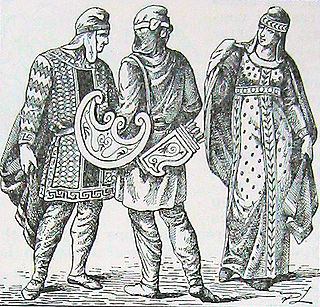
The Phrygians were an ancient Indo-European speaking people who inhabited central-western Anatolia in antiquity.
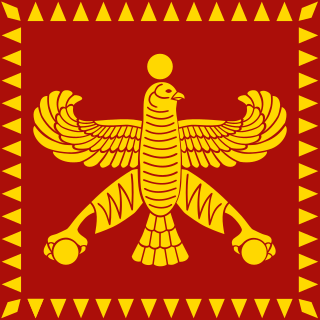
Cyrus II of Persia, commonly known as Cyrus the Great, was the founder of the Achaemenid Persian Empire. Hailing from Persis, he brought the Achaemenid dynasty to power by defeating the Median Empire and embracing all of the previous civilized states of the ancient Near East, expanding vastly and eventually conquering most of West Asia and much of Central Asia to create what would soon become the largest polity in human history at the time. Widely considered the world's first superpower, the Achaemenid Empire's largest territorial extent was achieved under Darius the Great, whose rule stretched from the Balkans and the rest of Southeast Europe in the west to the Indus Valley in the east.

Drangiana or Zarangiana (Greek: Δραγγιανή, Drangianē; also attested in Old Western Iranian as 𐏀𐎼𐎣, Zraka or Zranka, was a historical region and administrative division of the Achaemenid Empire. This region comprises territory around Hamun Lake, wetlands in endorheic Sistan Basin on the Iran-Afghan border, and its primary watershed Helmand river in what is nowadays southwestern region of Afghanistan.

Masistes was a Persian prince of the Achaemenid Dynasty, son of king Darius I and of his wife Atossa, and full brother of king Xerxes I. He was satrap (governor) of Bactria during his brother's reign, where he attempted to start a revolt in 478 BC.

In classical antiquity, Phrygia was a kingdom in the west-central part of Anatolia, in what is now Asian Turkey, centered on the Sangarios River. After its conquest, it became a region of the great empires of the time.

Gordion was the capital city of ancient Phrygia. It was located at the site of modern Yassıhüyük, about 70–80 km (43–50 mi) southwest of Ankara, in the immediate vicinity of Polatlı district. Gordion's location at the confluence of the Sakarya and Porsuk rivers gave it a strategic location with control over fertile land. Gordion lies where the ancient road between Lydia and Assyria/Babylonia crossed the Sangarius river. Occupation at the site is attested from the Early Bronze Age continuously until the 4th century CE and again in the 13th and 14th centuries CE. The Citadel Mound at Gordion is approximately 13.5 hectares in size, and at its height habitation extended beyond this in an area approximately 100 hectares in size. Gordion is the type site of Phrygian civilization, and its well-preserved destruction level of c. 800 BCE is a chronological linchpin in the region. The long tradition of tumuli at the site is an important record of elite monumentality and burial practice during the Iron Age.
Chapar Khaneh is the Persian-language term that refers to the postal service system used throughout the Achaemenid Empire. It was created by Cyrus the Great and later developed by Darius the Great as the royal method of communication throughout the empire. Each Chapar Khaneh was a station mainly located along the Royal Road, an ancient highway that was reorganized and rebuilt by Darius I, which stretched from Sardis in modern-day Turkey to Susa in modern-day Iran, connecting most of the major cities of the Achaemenid Empire.
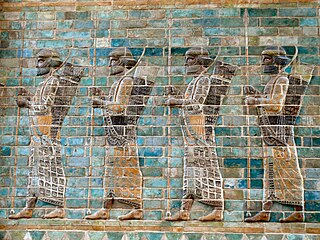
Achaemenid architecture includes all architectural achievements of the Achaemenid Persians manifesting in construction of spectacular cities used for governance and inhabitation, temples made for worship and social gatherings, and mausoleums erected in honor of fallen kings. Achaemenid architecture was influenced by Mesopotamian, Assyrian, Egyptian, Elamite, Lydian, Greek and Median architecture. The quintessential feature of Persian architecture was its eclectic nature with foreign elements, yet producing a unique Persian identity seen in the finished product. Achaemenid architecture is academically classified under Persian architecture in terms of its style and design.

The Achaemenid Empire or Achaemenian Empire, also known as the First Persian Empire, was the ancient Iranian empire founded by Cyrus the Great of the Achaemenid dynasty in 550 BC. Based in modern-day Iran, it was the largest empire by that point in history, spanning a total of 5.5 million square kilometres. The empire spanned from the Balkans and Egypt in the west, West Asia as the base, the majority of Central Asia to the northeast, and the Indus Valley to the southeast.

Oroetus, or Oroetes, was a Persian Satrap of Lydia, during the reigns of Cyrus the Great, Cambyses and Darius the Great, succeeding Harpagus, and being followed by Bagaeus. He is described by Herodotus in the third book of his Histories, where he achieved notoriety for the death of Polycrates, tyrant of Samos:
What I will now relate happened about the time of Cambyses' sickness. The viceroy of Sardis appointed by Cyrus was Oroetes, a Persian. This man purposed to do a great wrong; for though he had received no hurt by word or deed from Polycrates of Samos, nor had even seen him, he formed the desire of seizing and killing him. The reason alleged by most was this: — As Oroetes and another Persian, Mitrobates by name, governor of the province of Dascyleium, sat by the king's door, they fell from talk to wrangling and comparing of their several achievements: and Mitrobates taunted Oroetes, saying, "You are not to be accounted a man; the island of Samos lies close to your province, yet you have not added it to the king's dominion — an island so easy to conquer that some native of it rose against his rulers with fifteen men at arms, and is now lord of it. Some say that Oroetes, angered by this taunt, was less desirous of punishing the utterer of it than of by all means destroying the reason of the reproach, namely Polycrates.

Around 535 BCE, the Persian king Cyrus the Great initiated a protracted campaign to absorb parts of India into his nascent Achaemenid Empire. In this initial incursion, the Persian army annexed a large region to the west of the Indus River, consolidating the early eastern borders of their new realm. With a brief pause after Cyrus' death around 530 BCE, the campaign continued under Darius the Great, who began to re-conquer former provinces and further expand the Achaemenid Empire's political boundaries. Around 518 BCE, the Persian army pushed further into India to initiate a second period of conquest by annexing regions up to the Jhelum River in what is today known as Punjab. At peak, the Persians managed to take control of most of modern-day Pakistan and incorporate it into their territory.
The Angarium was the institution of the royal mounted couriers in ancient Persia. The messengers, called angaros (ἄγγαρος), alternated in stations a day's ride apart along the Royal Road. The riders were exclusively in the service of the Great King and the network allowed for messages to be transported from Susa to Sardis in nine days; the journey took ninety days on foot.

The Palace of Darius in Susa was a palace complex that was built at the site of Susa, Iran, during the reign of Darius I over the Achaemenid Empire. The construction was conducted parallel to that of Persepolis. Manpower and raw materials from various parts of the Achaemenid Empire contributed to its construction. It was once destroyed by fire and was partially restored later; little has remained from the complex, which is today part of an archaeological site.

Bagaeus, son of Artontes, was an Achaemenid nobleman, who was ordered by Darius I to kill the rebellious satrap of Lydia, Oroetes. Oroetes was accused of having killed Mitrobates, the satrap of Daskyleion and his son, but is best known as the murderer of Polycrates of Samos. Herodotus recounts how Bagaeus used written orders from Darius in order to assure himself of the obedience of the bodyguards of Oroetes to the orders of Darius, and when assured, produced a final order to kill Oroetes:
So when Darius became king, he wanted to punish Oroetes for all his wrongdoing, and especially for killing Mitrobates and his son. But he thought it best not to send an army openly against the satrap, seeing that everything was still in confusion and he was still new to the royal power; moreover he heard that Oroetes was very powerful, having a guard of a thousand Persian spearmen and being governor of the Phrygian and Lydian and Ionian province. He had recourse, then, to the following expedient: having summoned an assembly of the most prominent Persians, he addressed them as follows: “Persians, which of you will promise to do this for me, not with force and numbers, but by cunning? Where there is need for cunning, force has no business. So then, which of you would either bring me Oroetes alive or kill him? For he has done the Persians no good, but much harm; he has destroyed two of us, Mitrobates and his son, and is killing my messengers that are sent to recall him, displaying an insolence that is not to be borne. So, then, before he does the Persians some still greater harm, he has to be punished by us with death.” Darius asked this and thirty men promised, each wanting to do it himself. Darius told them not argue but draw lots; they did, and the lot fell to Bagaeus, son of Artontes. Bagaeus, having drawn the lot, did as follows: he had many letters written concerning many things and put the seal of Darius on them, and then went with them to Sardis.
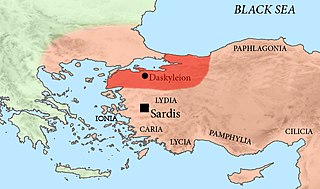
Mitrobates ; was an Achaemenid satrap of Daskyleion under the reigns of Cyrus the Great, who nominated him for the role, and Cambyses. After Cambyses died, and during the struggles for succession that followed, he is said to have been assassinated, together with his son Cranaspes, by the neighbouring satrap of Lydia, Oroetes, who wanted to expand his Anatolian territories. After the assassination, Oroetes added the territory of Hellespontine Phrygia to his own.
After Cambyses had died and the Magians won the kingship, Oroetes stayed in Sardis, where he in no way helped the Persians to regain the power taken from them by the Medes, but contrariwise; for in this confusion he slew two notable Persians, Mitrobates, the governor from Dascyleium, who had taunted him concerning Polycrates, and Mitrobates' son Cranaspes; and besides many other violent deeds, when a messenger from Darius came with a message which displeased him, he set an ambush by the way and killed that messenger on his journey homewards, and made away with the man's body and horse. So when Darius became king he was minded to punish Oroetes for all his wrongdoing, and chiefly for the killing of Mitrobates and his son.



















